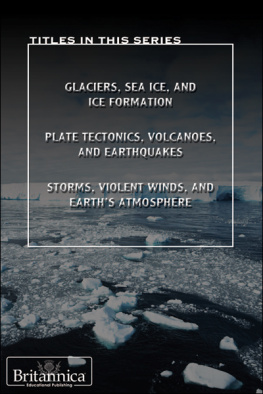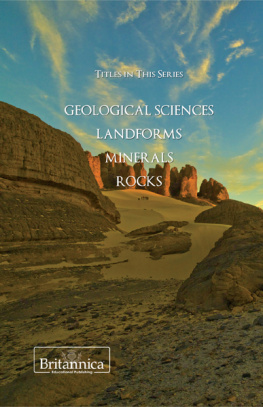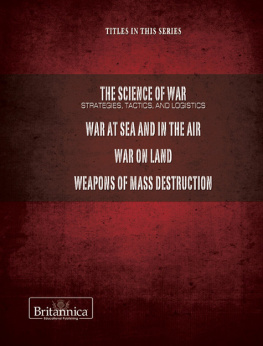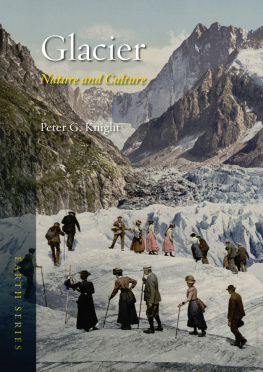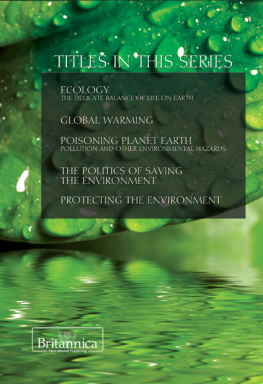GLACIERS, SEA ICE, AND ICE FORMATION
DYNAMIC EARTH
GLACIERS, SEA ICE,
AND
ICE FORMATION
EDITED BY JOHN P. RAFFERTY, ASSOCIATE EDITOR, EARTH SCIENCES

Published in 2011 by Britannica Educational Publishing
(a trademark of Encyclopdia Britannica, Inc.)
in association with Rosen Educational Services, LLC
29 East 21st Street, New York, NY 10010.
Copyright 2011 Encyclopdia Britannica, Inc. Britannica, Encyclopdia Britannica, and the Thistle logo are registered trademarks of Encyclopdia Britannica, Inc. All rights reserved.
Rosen Educational Services materials copyright 2011 Rosen Educational Services, LLC.
All rights reserved.
Distributed exclusively by Rosen Educational Services.
For a listing of additional Britannica Educational Publishing titles, call toll free (800) 237-9932.
First Edition
Britannica Educational Publishing
Michael I. Levy: Executive Editor
J.E. Luebering: Senior Manager
Marilyn L. Barton: Senior Coordinator, Production Control
Steven Bosco: Director, Editorial Technologies
Lisa S. Braucher: Senior Producer and Data Editor
Yvette Charboneau: Senior Copy Editor
Kathy Nakamura: Manager, Media Acquisition
John P. Rafferty: Associate Editor, Earth Sciences
Rosen Educational Services
Jeanne Nagle: Editor
Nelson S: Art Director
Cindy Reiman: Photography Manager
Matthew Cauli: Designer, Cover Design
Introduction by Theresa Shea
Library of Congress Cataloging-in-Publication Data
Glaciers, sea ice, and ice formation / edited by John P. Rafferty.1st ed.
p. cm.(Dynamic earth)
In association with Britannica Educational Publishing, Rosen Educational Services.
Includes bibliographical references and index.
ISBN 978-1-61530-189-8 (eBook)
1. Glaciers. 2. Sea ice. 3. Ice. I. Rafferty, John P. II. Series: Dynamic earth.
GB2403.2.G54 2010
551.31dc22
2010000226
On the cover: The Vatnajokull glacier in Icelands Jokulsarlon Glacier Lake. Michele Falzone/Photographers Choice/Getty Images
On : The San Rafael glacier in Chile, c. 1950. Three Lions/Hulton Archive/Getty Images
On : Ice melting in Lake Baikal, located in southeast Siberia. Shutterstock.com
www.istockphoto.com/Pablo Caridad
CONTENTS





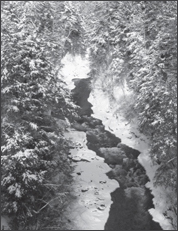







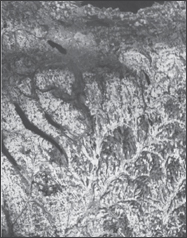


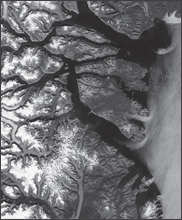
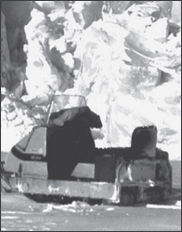


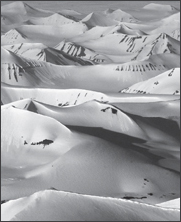

INTRODUCTION

W ater is at once simple and complex. Its study begins with a single molecule. A water molecule consists of two hydrogen atoms and one oxygen atom, as noted by its chemical formula H2O. In waters gaseous state, thermal energyheatenables single water molecules to float freely, mostly independently of one another. In waters liquid state, hydrogen atoms constantly form and break bonds with other hydrogen atoms, as exhibited by waters characteristic fluidity. In the solid phase, waters molecular bonds are dictated by the oxygen atoms, which form crystalline shapes, or ice.
On Earth, ice appears in many forms, from the ground-imbedded nature of permafrost to the towering majesty of mountainous glaciers. Each of these varied states is examined thoroughly in Glaciers, Sea Ice, and Ice Formation. Readers will virtually traverse pingos, rappel down cirques, and explore the frozen tundra of the Arctic and Antarctic as the complexities of this deceptively simple entity are revealed.
Unlike most materials, waters solid state is less dense than its liquid state, a factor that explains why ice floats above liquid water. People witness natural ice formations seasonally on lakes, ponds, and other small bodies of water. As average daily temperatures fall, thermal energy is released from liquid water until the waters surface temperature cools to the freezing point, and then below the freezing pointa process called supercooling. When this occurs, ice particles begin to form above the waters surface.
Though wind and currents typically interfere with the freezing process, ice can form on fast-flowing rivers. Ice crystals, called frazil, can appear as a thin layer of ice in a slow-moving river or as slush in faster currents. As ice forms, it slows down the velocity of the water. As long as air temperatures remain below freezing 32 F (0C) near the surfaces of lakes and rivers, ice will thicken from the bottom layers up. In other words, the water is at its coldest when the freezing of its surface begins. As temperatures increase, however, ice on rivers and lakes decays due to the penetration of solar radiation.
Next page
